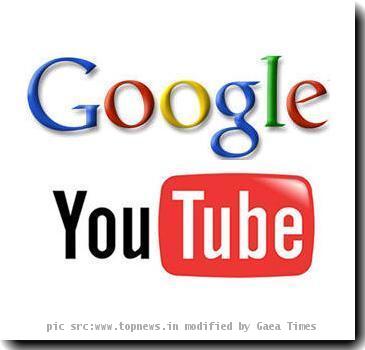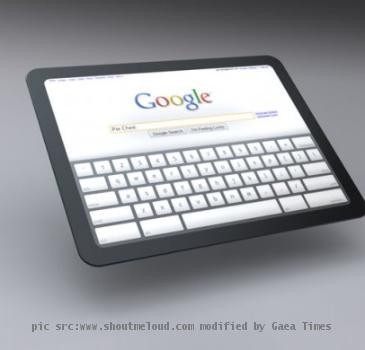Google tries to tune television into the Internet with help from Sony, Intel, Logitech
By Michael Liedtke, APThursday, May 20, 2010
Google, partners hoping consumers their Web TV
SAN FRANCISCO — Google Inc. believes it has come up with the technology to unite Web surfing with channel surfing on televisions.
To reach the long-elusive goal of turning TV sets into Internet gateways, Google has partnered with Sony Corp., Intel Corp. and Logitech International. They unveiled their much-anticipated plan for a “smart” TV on Thursday, and Intel CEO Paul Otellini predicted the effort will be “the biggest improvement to television since color.”
“Our goal is to make the same impact on television as the smart phone has had on the mobile phone market,” said Rishi Chandra, the Google product manager who is overseeing the smart TV project.
The TVs are expected to go on sale this fall in U.S. Best Buy stores, with prices to be announced later in the year. Sales will expand to other countries next year.
Other companies have tried to promote Internet-connected TVs with little success during the past decade.
“I have seen this movie before,” Gartner Inc. analyst Ray Valdes said of Google’s ambitious plans. “They are going down a road littered with failed initiatives like this.”
But Google and its partners believe they have developed a system that will make Internet TV simpler and more appealing. They are also counting on various websites to build news applications tailored to run on the Internet TV; they believe that would persuade more couch potatoes to begin interacting with their sets instead of just watching them.
Many households already have been connecting their TVs to the Internet, mostly to watch video through set-top boxes, video game consoles and Blu-ray players. Web-connected TVs are expected to account for about 19 percent of the U.S. sales of flat-panel models this year, with the share projected to rise to 46 percent in 2013, according to ABI Research.
Three of Google’s biggest rivals — Apple Inc., Microsoft Corp. and Yahoo Inc. — also have been trying to bring more Internet video and services to televisions.
Apple CEO Steve Jobs once described his company’s device for tethering TVs to the Internet as a “hobby.” Forrester Research analyst James McQuivey expects Apple to become much more serious about its efforts now that Google is expanding into TV.
“The whole game for Google is to become the (operating system) for the living room and make sure Apple doesn’t,” McQuivey said.
Google, which made the bulk of its nearly $24 billion in revenue last year from Internet ads displayed on computer screens, wants to turn televisions into giant monitors for Web surfing so it can make even more money. The company estimates that television accounts for $70 billion in annual advertising in the U.S. alone.
Google has been trying to sell ads for regular television programming for the past three years, but analysts say that has yielded paltry dividends so far.
Thursday’s demonstration of the Internet TV technology didn’t go smoothly at a Google conference for about 5,000 software programmers.
So many people in the audience were using the conference’s wireless access network that Google ran into repeated problems showing how its technology is supposed to toggle seamlessly between the Web and television programming. Google finally had to plead with the attendees to disconnect their smart phones from the network.
“Perhaps that was an omen of things to come,” Valdes said.
Once it got enough bandwidth, Google was able to conduct a series of Internet searches in a drop-down box that appears at the top of television programs. The search results pointed to Internet videos and other content related to the television program on the screen.
A telecast of a sporting event can be shrunk into a small “picture-in-picture” box so a viewer can look at statistics or other material about the game on TV.
Viewers will also be able to make search requests by speaking into a remote that runs on Google’s Android operating system.
And of course, users could simply use the entire screen for surfing.
Google CEO Eric Schmidt raved about the potential of the Internet TVs, although he acknowledged it might be difficult for some consumers to grasp at first. That’s one reason he said Google decided to team up with Best Buy, which offers a “geek squad” to deal with complex technology.
“You have to actually see (the Internet TV) to get excited about it,” Schmidt said after Thursday’s preview.
Consumers who already have splurged on flat-panel TVs will be able to plug into the new technology by buying a set-top box made by Logitech or a Blu-ray player from Sony. Both devices will contain the same software and microprocessor as the new TV sets.
Sony will make the TVs, giving it a new product that could stand out from other flat-panel sets on the market. It will use microprocessors from Intel, which is hoping to reduce its dependence on personal computers; the Atom chip design that will serve as the brains of the smart TVs so far has mostly been used in inexpensive, lightweight laptops known as netbooks.
Google will provide the software, including Android and the company’s Chrome Web browser. Logitech will supply a special remote control and wireless keyboard.
Tags: Arts And Entertainment, Computing And Information Technology, Consumer Electronics, Internet Technology, North America, Personnel, Products And Services, San Francisco, Television Programs, Televisions, United States
|
May 21, 2010: 7:29 am
I wondered when Google would be showing this off. It looks like they are not messing with this either with some serious tech partners, this could be massive in my opinion. Shame MS failed once again with this and the big G nails it first time! |


Ebook Reader Guide